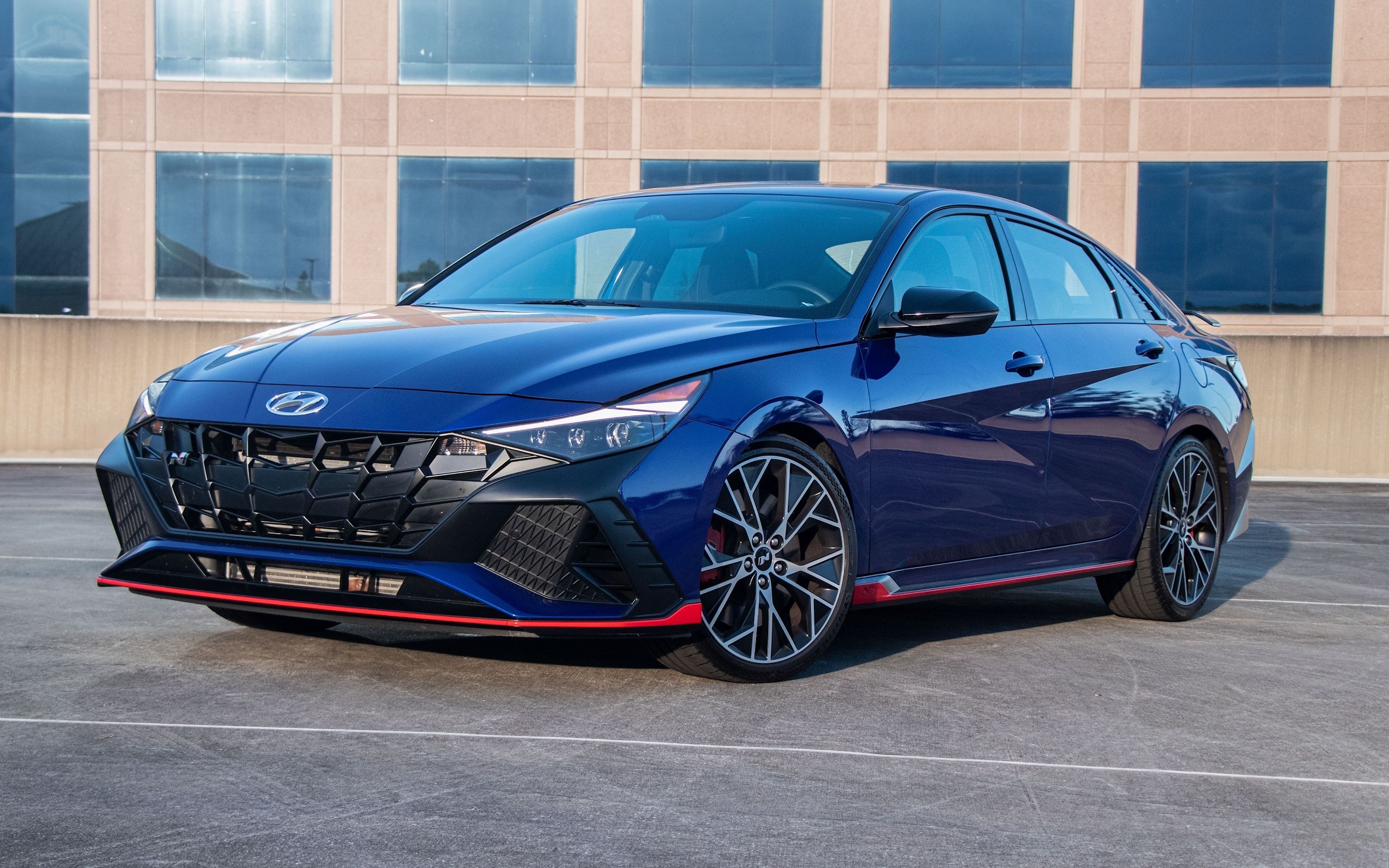
The 2022 Hyundai Elantra N has made its North American debut virtually after the 2021 New York Auto Show was cancelled with just weeks to go. Hyundai's hot new sedan does not disappoint, with a 2.0-liter turbocharged four-cylinder engine pumping out 276 horsepower and 289 lb-ft of torque, or 286 hp with the "N Grin Shift" feature, available for 20 seconds. The Elantra N sends its power to the front wheels only through either a six-speed manual or eight-speed dual-clutch and speaking with the Korean automaker, CarBuzz learned how many examples Hyundai expects to ship with three pedals.
We expect "30% manual and 70% DCT," said Michael Evanoff, Senior Manager of Product Planning. When asked if the N brand might ever adopt an all-wheel-drive drivetrain, Evanoff left it open ended. "It's always a subject," he explained. "Weight, complexity, and cost are the biggest deterrent. In the future, who knows?"
Though it does not have AWD and comes in a sedan body style, Hyundai believes the Elantra N has a wide competitive set. The Honda Civic Type R was a close competitor mentioned during the call, with the Elantra delivering "9/10th the performance at 7/10ths the price," according to Evanoff. Other rivals include the AWD Subaru WRX, and the Volkswagen Jetta GLI/Golf GTI. Though they may not directly compete with the Elantra, Evanoff also mentioned a few rear-wheel-drive sports cars like the Subaru BRZ, Ford Mustang, and Chevrolet Camaro as potential vehicles that customers might trade in on an Elantra N.
Looking at every other four-cylinder vehicle brought up during the call, the Elantra N easily produces the best (and loudest) exhaust note. Like the Veloster N, the Elantra N crackles and pops like a rally car, with a valve in the exhaust that can make the car quieter or louder. "There's a normal mode that meets the [noise] regulations," said Chahe Apelian, senior manager of vehicle development. "The sporty exhaust is meant to be for the track."
By making the default exhaust mode tame enough to meet restrictions, Hyundai was able to sneak a much louder sound past the regulators. We hope other automakers can learn from this and give their cars a throatier exhaust note.
